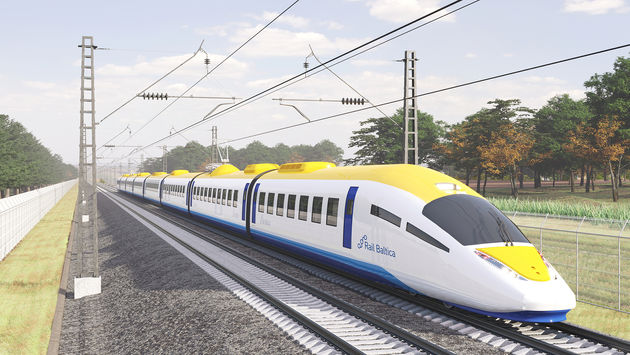New High-Speed Railway To Link Baltics To the Rest of Europe

The Baltic region’s largest infrastructure scheme in about a century is now officially underway, with multiple parts of the new Rail Baltica high-speed rail line now under construction.
Rail Baltica’s proposed passenger trains are designed to operate at top speeds of 234 km/h (roughly 145 mph) and provide seamless connections with the rest of the E.U. Once completed, its 870-km (540-mile) rail line will run from Warsaw in the south all the way up to Tallinn in the north, and the Gulf of Finland.
The project’s purpose is to provide a high-speed rail connection that will link the capital cities of Baltic nations Estonia, Latvia and Lithuania to the rest of Europe by way of the Polish capital.
The track comprising these Baltic states’ current rail systems was built using a Russian standard-width gauge, due to their former Soviet occupation in the last century. While they’ve since gained independence, their railroad tracks have not been reconfigured for compatibility with European standards, forcing these nations to rely on Russia for much of their trade and goods transported by rail.
Rail transport from the Baltics into and out of Europe has remained limited, since passengers and cargo need to be offloaded and then reloaded onto different trains at the Polish border in order to continue their journey onward.
Euronews.next reported that an inter-Baltic rail scheme has been discussed since the countries gained their independence in the 1990s, but its actualization has recently taken on new urgency. Russia’s invasion of Ukraine earlier this year caused all three countries to prioritize increasing their interoperability with the rest of the E.U.
The project’s cost burden for the Baltic countries costs is being significantly alleviated by the participation of the E.U.’s Connecting Europe Facility (CEF), which has committed to funding up to 85 percent of it.
The scheme’s overall estimated cost of €5.8 billion (currently equivalent to about US$5.8 billion) is daunting, but Rail Baltica’s cost-benefit analysis showed that the project could yield up to €16.2 billion (about US$16.2 billion) in quantifiable benefits.
It’s anticipated that the project’s construction alone will create around 36,000 direct and indirect jobs. Once it’s finished, Rail Baltica will represent the newest branch of the E.U.’s North Sea-Baltic Corridor, a trans-European route that connects such key cities as Rotterdam, Berlin, and Warsaw. The project is expected to reach completion sometime in 2026.
